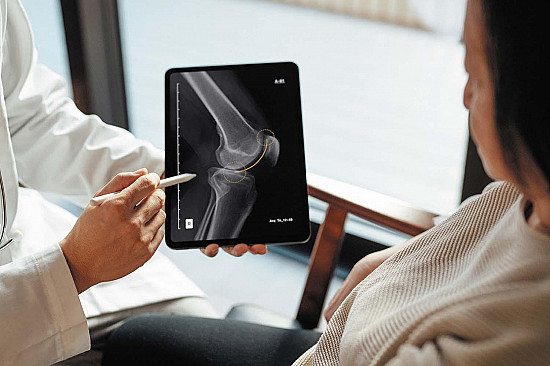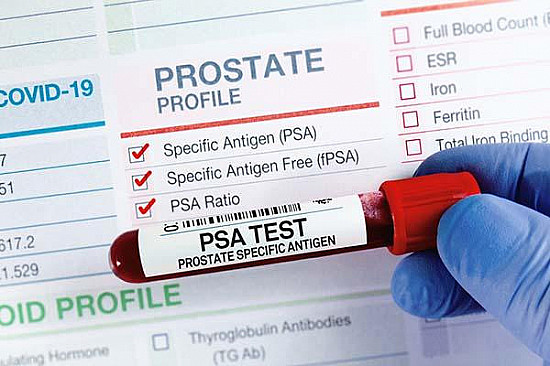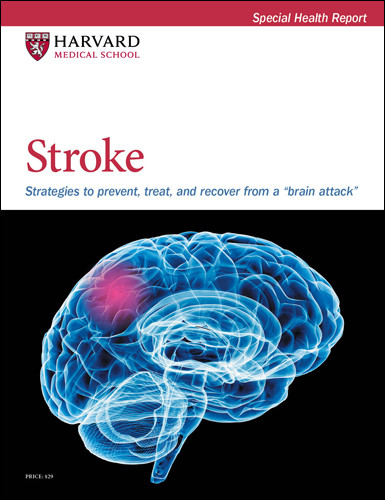Do you need to check for narrowed arteries in your neck?
Carotid artery ultrasounds are advisable only in a few specific circumstances.
- Reviewed by Christopher P. Cannon, MD, Editor in Chief, Harvard Heart Letter; Editorial Advisory Board Member, Harvard Health Publishing

Have you ever gotten a flyer in the mail advertising a "simple, painless ultrasound screening" that can identify dangerous plaque buildup? When offered by commercial companies, these tests are typically done in churches, recreation centers, or mobile vans. But they're also done at accredited medical facilities. One of the tests in the screening looks at the carotid arteries, which run up either side of your neck and supply blood to your brain.
Like arteries in the heart and elsewhere in the body, the carotid arteries can become clogged with fatty deposits (plaque) that narrow the path for blood flow. But contrary to what you might assume, checking for this problem — called carotid stenosis — rarely makes sense, especially with a screening test done by a for-profit company.
"The trouble with the commercial screening tests is they have lot of false positives. People aren't sure what the results mean, and they may end up feeling terrified for no reason," says cardiologist Dr. Marie Gerhard-Herman, associate professor of medicine at Harvard Medical School. A false positive result suggests the presence of significant stenosis that is not really there. It can lead to additional testing and worry — and possibly unneeded treatment.
How common, how risky?
By the time people reach their late 70s, it's not unusual for the carotid arteries to show signs of thickening. But only about one in 100 people in the general population has significant carotid artery stenosis. Carotid stenosis usually doesn't cause any harm unless the narrowing is particularly severe — a blockage of 70% or greater. The plaque can break open and a clot can form that cuts off blood supply to part of the brain, an emergency known as an ischemic stroke. But carotid stenosis is to blame for only about one in 10 ischemic strokes, according to a nationwide database.
When screening makes sense
There are only a few specific circumstances when a carotid artery ultrasound is definitely recommended, says Dr. Gerhard-Herman. The overwhelming majority of these cases are in people with signs or symptoms of carotid stenosis. One possible sign is a distinctive whooshing sound called a bruit (pronounced BROO-ee) that a doctor can hear through a stethoscope placed over the artery. Caused by turbulent blood flow through the narrowed artery, a bruit sounds like water flowing over rocks in the middle of a stream, says Dr. Gerhard-Herman.
Carotid ultrasounds are routine in people with symptoms of a transient ischemic attack (TIA), or ministroke, which usually disappear within an hour but may persist as long as 24 hours. These symptoms often include eye issues, most commonly a sudden loss of vision that people often describe as a curtain coming down over one eye. Others include trouble speaking or sudden weakness in the face, arms, or legs. If you have any of these symptoms, even if they pass quickly, call 911 right away. These are also the warning signs of an imminent full-blown stroke.
Treatment for carotid artery stenosis includes the same lifestyle habits recommended for people with heart disease (like a healthy diet and regular exercise), along with drugs to control blood pressure and cholesterol and drugs (such as aspirin, as needed) to prevent blood clots. People with serious blockages and those who've had a TIA or stroke may undergo surgery or placement of a stent, a tiny metal coil to prop open the artery. But because the procedures themselves can trigger a stroke, they are advised only for severe cases.
Seeing is believing
What about people without any signs or symptoms of carotid stenosis but who are at high risk — for example, a former smoker with high cholesterol and elevated blood pressure whose father had a stroke? "If that person is reluctant to take medications to lower their risk, a carotid artery ultrasound can be useful," says Dr. Gerhard-Herman. If the scan shows early signs of carotid stenosis, that may help motivate the person to adopt healthier habits to prevent the problem from getting worse.
If your doctor orders the test, the facility will usually check with your insurer before the test is performed to make sure it is covered. But it's worth double-checking yourself before having the test.
Image: © Westend61/Getty Images
About the Author

Julie Corliss, Executive Editor, Harvard Heart Letter
About the Reviewer

Christopher P. Cannon, MD, Editor in Chief, Harvard Heart Letter; Editorial Advisory Board Member, Harvard Health Publishing
Disclaimer:
As a service to our readers, Harvard Health Publishing provides access to our library of archived content. Please note the date of last review or update on all articles.
No content on this site, regardless of date, should ever be used as a substitute for direct medical advice from your doctor or other qualified clinician.
















